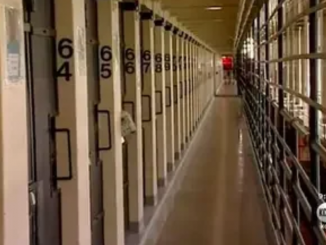
The Biden administration has released a new National COVID-19 Preparedness Plan that — surprise, surprise — calls for billions in new spending. The initiative is unnecessary, wasteful and will spark additional inflation.
Why in the middle of plunging COVID case, hospitalization and death rates do we need additional spending? New cases have fallen by 90% from their Jan. 15 peak and are back to some of the lowest levels seen in the pandemic. New COVID hospital admissions have fallen by 80% since mid-January to levels not seen in over a year. Deaths — a lagging indicator — have been falling steadily since the beginning of February.
The White House claims more money is needed to vaccinate Americans, including children under 5. But the FDA has delayed approval of vaccines in that young age group and the CDC has not recommended it. It is not clear that either agency ever will. Seventy-five percent of those 18 and older, including 89% of the most vulnerable who are 65 and older, are already fully vaccinated and about half the country has natural immunity from previous infections. COVID poses little risk of serious illness to those below age 18.
Moreover, spending more, as the White House requests, for vaccine outreach and education after a year of non-stop public appeals, is unlikely to convince the minority of people who have thus far refused the shot.
The administration is also asking Congress to reinstate tax credits for businesses to provide paid sick and family leave. This seems unnecessary with rapidly declining numbers of cases that are overwhelmingly mild. Moreover, as the economy struggles to get people back into the labor force, it seems counterproductive to restore a program that pays people not to work.
Recently, New York’s statewide COVID-19 positivity rate fell below 2 percent for the first time since Omicron was named a “variant of concern” last fall.
Paul Martinka
A more fundamental question is why additional COVID appropriations are needed when much of the previously appropriated money remains unspent? The $1.9 trillion American Rescue Plan of 2021 was passed through the reconciliation process with no Republican support and signed into law by President Biden on March 11, 2021. It followed the $2.2 trillion CARES act from March 2020 and the $900 billion Consolidated Appropriations Act, 2021 enacted in December 2021.
There has never been a clear accounting of where and how much of this roughly $5 trillion in appropriated money has been spent. While the federal government has committed to spend the majority of these funds, it has yet to spend all that it has formally committed. Moreover, roughly $500 billion has not even been obligated yet by any federal agency.
States and localities have only spent a small fraction of the money they have received. In October 2021, The Associated Press reported that over half of the states and two-thirds of the 90 largest cities had spent any of their American Rescue Plan money.
The AP found that states had only spent 2.5% of the funds they received, and large cities spent 8.5% of their money. And much of the money has been diverted to uses other than COVID relief. Since the Rescue Plan gives states until the end of 2024 to make spending commitments and the end of 2026 to spend the money, they appear to be well funded for the future without the need for additional outlays.
The Food and Drug Administration announced that the initial studies proved the need for more testing to see if young kids would need a third shot.
SAVO PRELEVIC
Finally, why in the midst of record inflation is the Biden administration proposing to spend more money when large sums of COVID relief remain unspent? This proposed large-scale government spending will exacerbate the problem and crowd out other priorities. As recent events have made clear, Biden’s feckless foreign policy has compelled additional defense spending that will be difficult to accomplish if we spend unnecessarily on COVID.
The president and his fellow travelers may not believe it, but the solution to every problem is not always to have the government spend more. It is to spend better. Let’s have a rigorous assessment of where we stand and what is realistically needed before we embark on yet another government boondoggle.
*story by The New York Post


